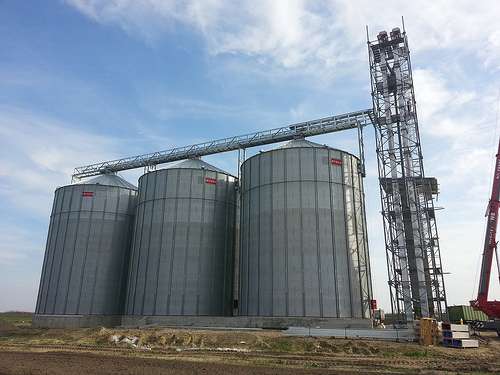Cooling silos reduces bugs and preserves grain

Cooling stored wheat grain in silos with aeration fans reduces insect propagation and preserves grain quality, according to recent research.
Kondinin Group General Manager Research Ben White says their pilot study has revealed cooling grain has numerous benefits for growers.
"Fitting silos with cooling fans and aeration controllers reduces grain temperature which reduces the number of insect pests in the grain," Mr White says.
"We found aeration also has improved seed viability [seed's ability to germinate], over seed stored in conventional non-aerated storage, reducing the seed losses growers might normally incur when storing seed over summer."
The three-year collaboration between agricultural research and development organisations
Mingenew Irwin Group (MIG) and Kondinin Group was conducted at two locations near Mingenew in the Mid West.
Researchers used four silos to test seed viability; two installed with aeration fans and two controls without fans.
They found using an aeration system and keeping seed grain cool almost halved the proportion of non-sprouting grain.
At one location, the volume of non-sprouted grain was 5.7 per cent in the control silo and 2.4 per cent in the aerated silo.
At the second location, it was 3.5 per cent in the control silo and 2.3 per cent in the aerated silo.
Aerating silos reduces bug presence
The researchers also found a significant difference in the number of pests in the silos.
In traps set in the control silos, they counted a total of 104,697 red flour beetles (Tribolium castaneum) and in the aerated silo traps, there were 5238.
"The red flour beetle is becoming increasingly resistant to phosphine, so by aerating the silos, we may be able to reduce the use and resistance pressure on phosphine," Mr White says.
The amount of another type of beetle, the lesser grain borer (Rhyzopertha dominica) were reduced by 4905.
"A fan for a single silo costs about $600 while an aeration controller costs around $7000 but can control 16 silos," Mr White says.
"In terms of economic viability, the fans virtually pay for themselves through retained seed viability."
The researchers are now trialling the effectiveness of hygiene and structural treatment measures.
"This involves washing the silos thoroughly and applying a naturally occurring product, Diatomaceous Earth, as a structural treatment."
Results from the hygiene treatment component of the study are expected in March/April.
Provided by Science Network WA



















